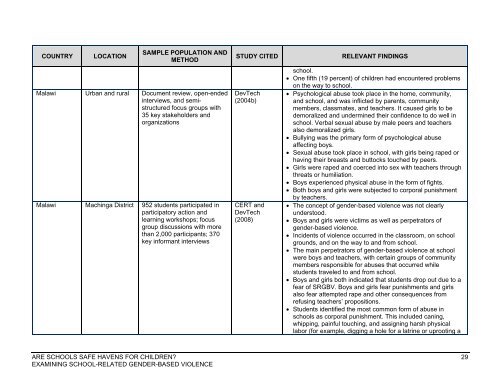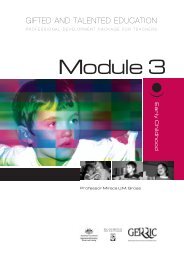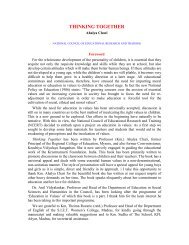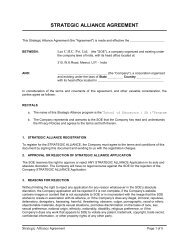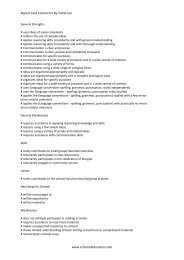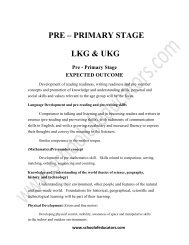COUNTRYGhanaGhana andMalawiLOCATIONFour districts(Cape Coast,Sunyani, AframPlains, andBawku)SAMPLE POPULATION ANDMETHODMixed methods study usingstructured interviews, focusgroup discussions, and recordreview; stratified randomsampling of 490 secondaryschool students younger than18 (362 girls and 128 boys),49 head teachers, and 116parentsRural and urban In Ghana, interviews with 48girls and 27 boys ages 11-17;in Malawi, interviews with 106female students and 65 malestudents ages 10-18; focusgroup discussionsJamaica Urban and rural Document review and semistructuredinterviews withstakeholders and agencyrepresentatives of 20government organizations, fiveinternational donors andorganizations, and 15 NGOsMalawi National A nationally representativesample of 4,412 children (twothirdsgirls) were interviewedusing a quantitativequestionnaireSTUDY CITEDBrown (2003)Leach et al.(2003)DevTech(2005)Burton (2005)RELEVANT FINDINGS• There was virtually no sexual abuse prevention andresponse training for school staff, teachers, or students.• Grievance procedures were nonexistent or inadequate.• The Code of Professional Conduct of the Ghana EducationService was not widely known by parents or the generalcommunity.• Abuse by teachers negatively affected the learningenvironment.• Abusive behavior fed on poverty and ignorance.• Girls, parents, and teachers were ambivalent towardteachers having sex with female students.• Psychological abuse: Girls experienced verbal abuse in thehome, school, and broader community.• Sexual abuse: Children experienced sexual abuse in thehome, community, and school. At school, girls experiencedsexual harassment, inappropriate touching, and pressurefrom teachers and peers to engage in sexual relationships.Boys were seen as sexually aggressive, and there waspressure on boys to engage in sexual activity early and oftenas a means of proving manhood.• Physical abuse: Both boys and girls were physicallypunished in the home or the school. Children played out thisviolence in the classroom and schoolyard. Boys were morelikely to receive harsh punishment in school. In school, boyswere more likely to receive corporal punishment, particularlyfrom female teachers. Boys who did not measure up tomasculinity norms or who appeared feminine were alsosubjected to violence.• Almost one quarter (24 percent) of Malawian children werescared when walking to school due to a fear of beingattacked (71 percent) or bullied (13 percent).• More than one quarter (27 percent) of children personallyknew someone who experienced a problem on the way to28<strong>ARE</strong> <strong>SCHOOLS</strong> <strong>SAFE</strong> <strong>HAVENS</strong> <strong>FOR</strong> <strong>CHILDREN</strong>?EXAMINING SCHOOL-RELATED GENDER-BASED VIOLENCE
COUNTRYLOCATIONSAMPLE POPULATION ANDMETHODMalawi Urban and rural Document review, open-endedinterviews, and semistructuredfocus groups with35 key stakeholders andorganizationsMalawi Machinga District 952 students participated inparticipatory action andlearning workshops; focusgroup discussions with morethan 2,000 participants; 370key informant interviewsSTUDY CITEDDevTech(2004b)CERT andDevTech(2008)RELEVANT FINDINGSschool.• One fifth (19 percent) of children had encountered problemson the way to school.• Psychological abuse took place in the home, community,and school, and was inflicted by parents, communitymembers, classmates, and teachers. It caused girls to bedemoralized and undermined their confidence to do well inschool. Verbal sexual abuse by male peers and teachersalso demoralized girls.• Bullying was the primary form of psychological abuseaffecting boys.• Sexual abuse took place in school, with girls being raped orhaving their breasts and buttocks touched by peers.• Girls were raped and coerced into sex with teachers throughthreats or humiliation.• Boys experienced physical abuse in the form of fights.• Both boys and girls were subjected to corporal punishmentby teachers.• The concept of gender-based violence was not clearlyunderstood.• Boys and girls were victims as well as perpetrators ofgender-based violence.• Incidents of violence occurred in the classroom, on schoolgrounds, and on the way to and from school.• The main perpetrators of gender-based violence at schoolwere boys and teachers, with certain groups of communitymembers responsible for abuses that occurred whilestudents traveled to and from school.• Boys and girls both indicated that students drop out due to afear of SRGBV. Boys and girls fear punishments and girlsalso fear attempted rape and other consequences fromrefusing teachers’ propositions.• Students identified the most common form of abuse inschools as corporal punishment. This included caning,whipping, painful touching, and assigning harsh physicallabor (for example, digging a hole for a latrine or uprooting a<strong>ARE</strong> <strong>SCHOOLS</strong> <strong>SAFE</strong> <strong>HAVENS</strong> <strong>FOR</strong> <strong>CHILDREN</strong>?EXAMINING SCHOOL-RELATED GENDER-BASED VIOLENCE29
- Page 1 and 2: ARE SCHOOLS SAFE HAVENS FORCHILDREN
- Page 3: ARE SCHOOLS SAFE HAVENSFOR CHILDREN
- Page 7 and 8: CONTENTSACKNOWLEDGEMENTS ..........
- Page 9 and 10: ACKNOWLEDGEMENTSThis report was com
- Page 11: EXECUTIVE SUMMARYAll children deser
- Page 15 and 16: Equating masculinity with the sexua
- Page 17: ipe for sexual abuse and the exploi
- Page 20: illustrative and provide a snapshot
- Page 24 and 25: students surveyed did not think tea
- Page 26 and 27: ENFORCEMENTPoor, inadequate, or inc
- Page 28 and 29: LEGAL AND POLICY CHANGESMany countr
- Page 30 and 31: espectfully. Assessments have revea
- Page 32 and 33: gender stereotypes and raised aware
- Page 34 and 35: • Implement a code of conduct for
- Page 36 and 37: • Institute appropriate responses
- Page 38 and 39: COUNTRYBrazilLOCATION13 state capit
- Page 42 and 43: COUNTRYLOCATIONSAMPLE POPULATION AN
- Page 44 and 45: COUNTRYSouth AfricaLOCATIONRural, g
- Page 46 and 47: COUNTRYLOCATIONSAMPLE POPULATION AN
- Page 48 and 49: COUNTRYLOCATIONSAMPLE POPULATION AN
- Page 50 and 51: Laws, S. and G. Mann. 2004. So you
- Page 52 and 53: Beazley, H., S. Bessell, J. Ennew,
- Page 54 and 55: Girard, F. 2003. “’My father di
- Page 56 and 57: Mlamleli, O., V. Napo, V. Mabelane,
- Page 58: United Nations Office for the Coord


